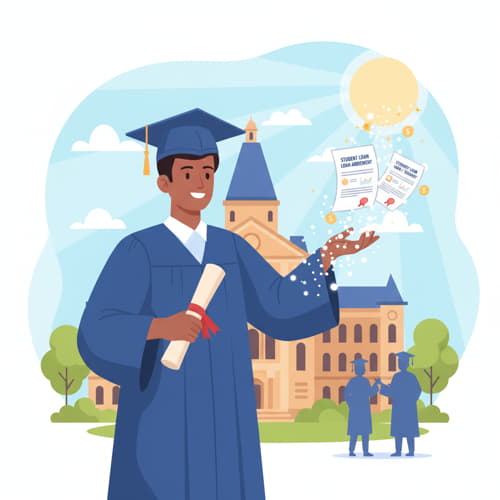Student Loan Forgiveness: What You Need to Know in 2025
Student Loan Forgiveness: What You Need to Know in 2025
 Introduction
Introduction
Student loans remain one of the most pressing financial concerns for graduates across the United States. With millions burdened by debt, the idea of loan forgiveness is both attractive and controversial. In 2025, new updates and policies continue to shape how forgiveness programs work, who qualifies, and what the future of student debt may look like. This post explores the key aspects of student loan forgiveness, the latest changes, and practical steps borrowers can take to benefit.
What Is Student Loan Forgiveness?
Student loan forgiveness means having part or all of your federal student loan balance canceled, so you no longer have to repay it. Forgiveness programs are usually tied to:
Employment in public service sectors
Income-driven repayment (IDR) plans
Specific federal initiatives
Private student loans, unfortunately, are rarely eligible for forgiveness, though some lenders may offer relief in hardship cases.
Types of Student Loan Forgiveness Programs
1. Public Service Loan Forgiveness (PSLF)
Designed for borrowers who work full-time in government or non-profit organizations.
Requires 120 qualifying monthly payments under a qualifying repayment plan.
After successful completion, the remaining balance is forgiven.
2. Teacher Loan Forgiveness
Teachers in low-income schools may qualify for up to $17,500 in forgiveness.
Requires five consecutive years of full-time teaching.
3. Income-Driven Repayment (IDR) Forgiveness
IDR plans cap monthly payments based on income and family size.
After 20–25 years of consistent payments, the remaining balance is forgiven.
4. Temporary or Special Programs (2025 Updates)
Periodic government initiatives (e.g., pandemic-era relief) can create new opportunities.
Borrowers should keep track of policy changes as eligibility windows may be short.
Latest Updates on Student Loan Forgiveness in 2025
PSLF Simplification – Borrowers are reporting fewer bureaucratic hurdles. Digital tracking of qualifying payments has improved.
IDR Account Adjustment – The Department of Education is crediting certain past payments that were previously not counted.
Taxation Relief – Forgiven student loan balances will remain tax-free until at least 2025, under the American Rescue Plan provisions.
Biden Administration Updates – Additional targeted relief is being considered for vulnerable groups, such as disabled borrowers.
Pros and Cons of Loan Forgiveness
Pros:
Reduces financial stress.
Helps borrowers plan for homeownership, savings, and retirement.
Encourages work in public service and non-profit sectors.
Cons:
Eligibility requirements are strict.
Process can take decades (IDR, PSLF).
May create uncertainty due to political debates and program changes.
Steps to Apply for Forgiveness
Determine Eligibility – Check if you qualify under PSLF, Teacher Forgiveness, or IDR plans.
Submit Documentation – Use the official StudentAid.gov website for PSLF forms and IDR applications.
Track Your Payments – Keep personal records in case of disputes.
Stay Updated – Policies often change, so subscribe to Department of Education updates.
Alternatives If You Don’t Qualify
Refinancing: Private lenders may offer lower interest rates if you have strong credit.
Employer Repayment Assistance: Some companies now contribute to student loan repayment as an employee benefit.
Aggressive Repayment Strategies: Using side income, budgeting, or the snowball/avalanche method can reduce debt faster.
Conclusion
Student loan forgiveness offers hope for millions struggling with debt, but it’s not a guaranteed path for everyone. In 2025, borrowers should take advantage of updated federal policies, stay informed about new programs, and carefully plan repayment strategies. Whether you qualify for PSLF, IDR forgiveness, or teacher forgiveness, being proactive is the best way to reduce your student debt burden.
 Introduction
Introduction

